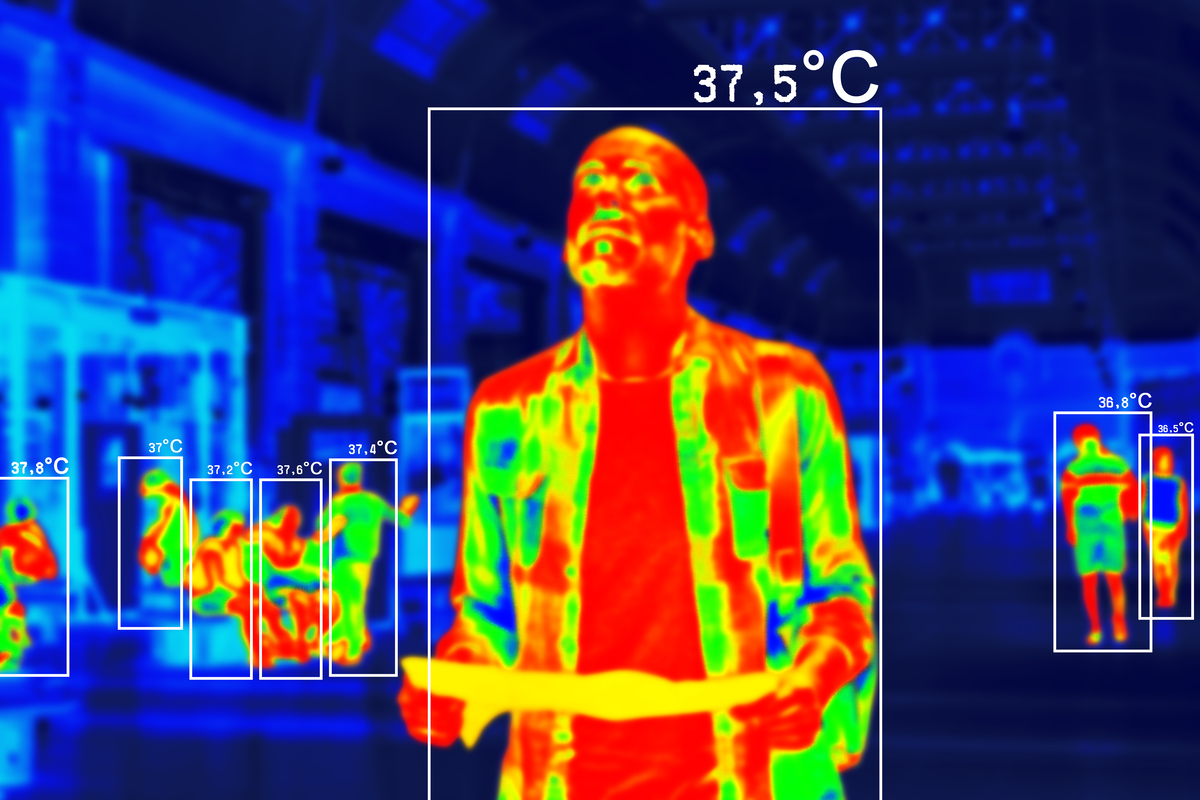The buildings of the future, both in office spaces and residential homes, will offer luxury and comfort that can only come from advances in modern technology, particularly in the area commonly referred to as the “Internet of Things” or IoT. These futuristic “Smart” buildings will be packed with a range of internet-connected Edge devices and sensors that can not only tailor the environment according to the tastes and preferences of each individual, but will also analyze and predict usage patterns to save scarce resources such as energy, water and contribute to the overall resilience and safety of the community living in these buildings.
Member states are required to develop long-term plans to integrate energy systems in safer, more sustainable, and low-carbon buildings by 2050, in accordance with the European Energy Efficiency Directive for Buildings. This method identifies and assesses a building’s smart readiness as well as its ability to adjust its operations in response to network and occupant needs using a shared, optional regime. The Smart Readiness Indicator (SRI) was created as a result.
The assessment of a building’s technological preparedness is based on the existence and functionality of different smart services, with the objectives being energy efficiency, user-friendliness, and energy flexibility. Because the parameters that need to be considered are not routinely regulated, applying SRIs is a difficult process. Nonetheless, the Smart Readiness Indicator (SRI) can serve as a catalyst for achieving the potential of building restoration by fusing the many components and linking them to the use of cutting-edge technology.
The Smart Readiness Indicator (SRI) is designed to raise awareness of the benefits of smart building technology and services by making them more tangible for users, owners, tenants, and smart service providers. It seeks to stimulate creative breakthroughs in the building industry and promote the incorporation of state-of-the-art smart technologies into buildings.
Table of Contents
Initial Theory
Member states are required to develop long-term plans to integrate energy systems in safer, more sustainable, and low-carbon buildings by 2050, in accordance with the European Energy Efficiency in Buildings directive. This method identifies and assesses a building’s smart readiness as well as its ability to adjust its operations in response to network and occupant needs using a shared, optional regime. The smart readiness indicator (SRI) was created as a result. The assessment of a building’s technological preparedness is based on the existence and functionality of different smart services, with the objectives being energy efficiency, user-friendliness, and energy flexibility.
It is a fact that there is now a dearth of study and data regarding Smart Readiness Indicator (SRI) for buildings. Since smart buildings are still a relatively new topic, research and development are still being done in this field. In a recent study, the methodology for determining the Smart Readiness Indicator (SRI) was studied in relation to the most recent directive on the energy performance of buildings. They discovered that this indicator may be used for any kind of building use and produces accurate findings about how energy loads are displaced and how the building interacts with energy networks.
Suggested article to read: Smart Building Technology; 2025 Guide
Recent research indicates that different building types require different formulas for calculating the Smart Readiness Indicator (SRI). It is known that a building’s technical systems vary depending on what purpose they serve. This study also discovered that by correctly calculating the Smart Readiness Indicator (SRI), structures that are capable of producing energy as well as managing the generation, transmission, and distribution of utilities can be found. Public structures, such as educational ones, are crucial in this setting.
After it has been consolidated and its shortcomings fixed, it is expected that the Smart Readiness Indicator (SRI) will be included in the energy class computation for buildings in the next years, with the indicator’s outcome being included in the energy certificate.
What is the SRI, or Smart Readiness Indicator?
The term “Smartness” refers to a building’s ability to sense, interpret, communicate, and respond to changing conditions pertaining to the operation of its technological systems, the surrounding environment (including energy grids), and the requirements of its occupants.
The Smart Readiness Indicator rates buildings (or building units) based on how well they can carry out three main tasks.
- Maximize the performance of the currently in use system and energy efficiency.
- Adjust how they operate to the occupant’s demands.
- Adjust to grid signals (such as energy flexibility).
The benefits of smart building technology, such as building automation and electronic building system monitoring for HVAC in buildings, lighting, ventilation, and hot water, will be made more generally recognized through the Smart Readiness Indicator (SRI). The use of the SRI framework stimulates technological innovation in the building sector by supporting the incorporation of state-of-the-art smart technologies in buildings.
A smart building is one that adapts its operations to the needs of its users (e.g., demand response for lighting and HVAC systems), the grid (e.g., smart meters, demand response), and the building itself (e.g., an internet-accessible building management system). It does this by using electronic systems and information and communication technologies.
The EPBD required the development of a voluntary European standard for classifying buildings according to their level of smart readiness.
The Smart Readiness Indicator (SRI) aims to give tenants, building owners, and users a more concrete understanding of the added value that smart buildings offer. To design and assess the voluntary initiative, the European Commission mandated a collaboration (VITO, Waide Strategic Efficiency Europe). The proposed SRI technique makes use of a qualitative labeling scheme.
The foundation of the Smart Readiness Indicator assessment process is an evaluation of the functionality that a building’s smart ready services can offer. It is possible to assign varying “Smartness” or “functionality levels” to any service. The following nine domains comprise the smart ready services:
- Warming and Cooling
- Hot water for the residence
- Regulated airflow
- Light
- Adaptable building envelope
- Electricity for electric vehicle charging
- Observation and management
Every one of the smart ready services has two to five defined functionality levels. A service is deemed “Smarter” when it is offered at a higher functionality level and usually has a greater positive impact on building users or the grid than when it is done at a lower functionality level.

The Smart Readiness Indicator Approach
The suggested procedure is simple to comprehend. The first step in assessing a facility’s Smart Readiness Indicator is determining which services are ready. These fall under a number of categories (lighting, heating, electric vehicle charging, etc.).
Next, the functionalities that these services are capable of offering are evaluated. For example, each service can be applied to multiple intelligence levels (referred to as “functionality levels”). For example, think about lighting control. “Manual on/off control of lighting” is a simple example; it can be as sophisticated as “Automatic on/off switching of lighting based on daylight availability” or even “Automatic dimming of lighting based on daylight availability.”
The impact score is assessed using a range of impact criteria (such as energy savings, greater comfort, flexibility with respect to the energy grid, etc.) once the services offered by a facility have been identified. A checklist is then used to combine these effects and attributes to provide a final score that represents how well-prepared a building is. The result can be displayed as a relative score, an overall single score, or a label classification (e.g., SRI label class “B”) (e.g., showing that a building achieves 65% of its possible smartness impacts). Sub-scores, such as 72% for energy savings and 63% for comfort, can also be shown.
Suggested article to read: The Future of Smart Construction; 2025 Review
Smart Readiness Indicator Estimate
An evaluation of “Smart-ready services” in the nine technological areas of electricity, electric car charging, monitoring, control, dynamic building envelope, lighting, ventilation, heating, cooling, and ventilation is the foundation of a Smart Readiness Indicator (SRI) assessment.
The success of each service is assessed using the seven desired impacts of smart buildings: energy efficiency, maintenance and fault prediction, comfort, convenience, health, well-being, and accessibility, information to occupants, energy flexibility, and storage.
The Smart Readiness Indicator (SRI) score and total SRI class, which are obtained from the smart-ready evaluation findings, indicate how close the building is to optimal smart readiness. Additionally, specific scores are calculated for each of the three primary building intelligence attributes.
Contrasting SRI Legal and Technical Frameworks
The Smart Readiness Indicator (SRI) legal framework is defined by the Commission Delegated Regulation (EU) 2020/2155 and its annexes, as well as the 2018 amendment of the European Energy Performance of Buildings Directive (EPBD). It consists of the foundation and tenets of the SRI calculation approach.
On the other hand, the technical foundation for the Smart Readiness Indicator (SRI) must be established by the national authority implementing the SRI. Each country must define a list of services that are ready for smart technology, together with the functionality levels and other parameters, in order to integrate the computations into a single score. However, if this form is completed and the related terms and conditions are approved, a generic technological framework will be made accessible after extensive stakeholder consultations throughout Europe.
Suggested article to read: Top 7 Smart Materials in Architecture (2025)
Increasing the Intelligence of Buildings
In the future, smart buildings—both newly built and renovated—will be essential to our energy system. The Internet of Things and smart energy management systems, among other contemporary ICT-based technologies, have made it possible to effectively control and monitor a building’s energy efficiency and flexibility.
Smart applications guarantee that all client needs are met, energy consumption and carbon emissions are minimized, and you save money on your energy bill. Among the benefits of smart buildings are smart appliances, solar panels, energy systems, heat pumps, and other household products. Increasing the tangible added value of smart building features for building occupants, owners, tenants, and smart service providers is the aim of the Smart Readiness Indicator.
More specifically, it provides information on the degree to which buildings equipped with technology can interact with both the energy system and its occupants. In a similar spirit, it highlights how ICT technology may enhance building performance and facilitate more efficient operation. By providing all significant stakeholders with a common language, the Smart Readiness Indicator (SRI) can promote the adoption of technical innovation and smart ready technologies through the creation of a credible and integrated instrument.

Effects of Smart Ready Services
The Smart Readiness Indicator has a number of effects on both the energy grid and its customers. Consideration has been given to seven impact categories:
Energy Savings On-site: This impact category deals with how the smart ready services affect the ability to save energy. The only thing considered is how smart ready technology, such better temperature control throughout rooms, affect a building’s total energy performance.
Flexibility of the Grid and Storage: This impact category deals with how services affect the building’s ability for energy flexibility. In addition to energy networks, the report recommends taking into account the flexibility offered by district heating and cooling systems.
Coziness: This impact category covers the effects of services on occupant comfort. The idea of comfort, which includes both conscious and unconscious perception of the physical surroundings, includes thermal comfort, acoustic comfort, and visual performance (i.e., having enough lighting levels without glare).
Easy Accessibility: This impact category addresses the degree to which services “Make life easier” for users, such as in the case of TBS, by needing fewer manual interactions.
Well-being and Health: This impact category includes how services affect the health and well-being of tenants. Better interior air quality, for instance, can be achieved with smarter controls than with traditional ones, directly improving the health and well-being of tenants.
Upkeep and Error Forecasting: Automated fault detection and identification has the potential to significantly improve technical building systems’ functionality and maintenance. It might also affect the energy performance of the technical building systems by identifying and fixing wasteful operation.
Details for Tenants: This impact category covers the effects of services on informing building occupants on the operation of the facility.
The first step in calculating the Smart Readiness Indicator score is to assess each smart-ready service. This involves looking at the building’s services and figuring out how functional they are. Once the effect scores of these individual services are known, an aggregate impact score for each of the nine smart-ready domains is calculated.
The domain impact score is calculated as the ratio (expressed as a percentage) between the individual service scores for each domain and the theoretical maximum individual score. The overall impact score for each of the seven impact categories is then calculated using the weighted total of the domain impact ratings. The SRI score is then calculated using the weighted total of the seven overall impact scores.
Suggested article to read: Top 13 Smart Building Companies in the World; 2025 Review
Is it Possible for the Smart Readiness Indicator (SRI) Methodology to Change?
After extensive stakeholder consultations throughout Europe, the general, EU-level technical framework of the Smart Readiness Indicator (SRI) was developed. Based on feedback from the LIFE project activities, official test phases carried out in EU member states, and other stakeholders, the framework may be improved.
In order to facilitate conversations between EU member states and interested parties on a variety of Smart Readiness Indicator (SRI) subjects, including potential modifications to the overall technological framework, the SRI platform was established in December 2021. All parties interested in following the development of the Smart Readiness Indicator approach are welcome to attend the biennial plenary sessions hosted by the SRI platform. Finally, national authorities may choose to create a national technological framework of their own.

Where to Identify the Complete Smart Readiness Indicator (SRI) Techniques?
The Commission Delegated Regulation (EU) 2020/2155 established a uniform method for computing the Smart Readiness Indicator (SRI). Among other things, its annexes contain general recommendations for the calculation of smart readiness scores, the weighting of impact criteria in significant functionality, the weighting of technical domains, and the smart readiness rating. The information contained in these annexes makes up the Smart Readiness Indicator (SRI) legal framework.
The Smart Readiness Indicator technology architecture consists of the capability levels, weighing criteria, and library of smart-ready services, both mandatory and voluntary. A general technical framework has been prepared at the EU level based on the results of a technical research done in 2019-2020 on the SRI (refer to chapter 1 of the Final report on the technical support to the establishment of a smart readiness indicator for buildings). You can obtain the calculation sheet and practical advice upon request by completing this form.
Conclusion
In 2018, the Energy Performance of Buildings Directive was amended to incorporate the Smart Readiness Indicator (SRI) for buildings. Following the extensive stakeholder consultation and rigorous development of the two SRI technical support studies contracted by the European Commission’s (EC) Directorate General for Energy (DG ENER), the first version of the Smart Readiness Indicator has been accessible since Autumn 2020.
The Member States of the European Union are now in charge of deciding how to implement the Smart Readiness Indicator (SRI) at the national level, and only after completing a voluntary national testing process. This is because the SRI was intended to be a voluntary initiative.
The 2018 amendment of the European Energy Performance of Buildings Directive (EPBD) aims to progress smart building technology by establishing a Smart Readiness Indicator (SRI) for buildings. With the use of this metric, a building’s “Smart readiness,” or its ability to modify operations in response to grid signals and to the demands of its occupants while optimizing overall performance and energy efficiency, may be rated.
The smart ready indicator is intended to raise awareness among building owners and occupants of the advantages of building automation and electronic building system monitoring. It also helps to establish tenant confidence in the actual cost savings that come with these new and improved features.
Suggested article for reading:
Top 11 Smart Cities in the World: 2025 Review
Smart Warehouse in Construction; Guide to 2025
Resources:
Wuerth | BMK | Euroheat | Mendeley | ComfortConsulting | ScienceDirect | MDPI | Energy.ec.Europa | Rehva | EnergyVille | AISBL
For all the pictures: Freepik



